The fire had almost gone out when the elder reached for his quiver. It wasn’t polished or ornate. It smelled of the forest floor—earth, smoke, and seasons.
I was deep in Bastar, Chhattisgarh, sharing a fire with the Muria tribe when I truly understood what tribal weapons meant.
These weren’t relics. These were stories.
Yes, they were tools. But they were also culture, memory, survival, and identity—crafted into form.
Across India, the traditional weapons of tribes are much more than instruments of defense or hunting. They are living knowledge, shaped by land, ritual, and ancestry. The wood is selected based on the rhythm of rivers. The tips are forged with rituals that follow moon cycles.
They don’t just guard land—they guard identity.
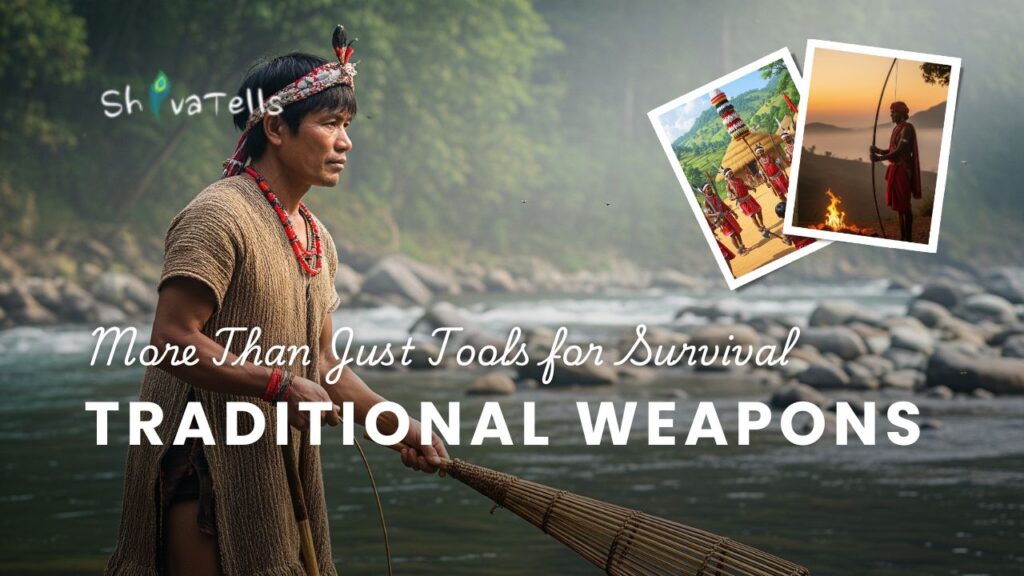
Table of Contents
When the Bow Speaks First
In Arunachal Pradesh, I walked misty paths with members of the Nyishi tribe. Each man carried a bamboo bow—slung casually across the shoulder. Not as an accessory, but as a way of life.
Here, wild boars still roam the forest’s edge. And dinner sometimes arrives on foot—not from a market.
One elder showed me a family spear. The iron tip had been replaced over time, but the wooden handle had belonged to his grandfather. It curved with use and age.
“The forest gives,” he said, “and we listen.”
That’s when it became clear: tribal weapons aren’t manufactured—they are grown, honed, and inherited.
Symbols in Wood, Not Just War
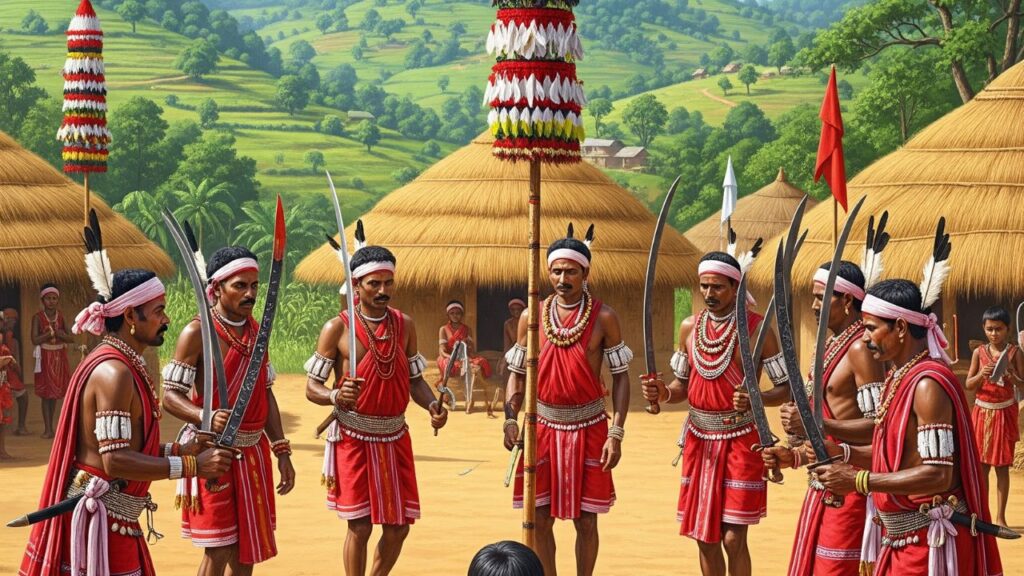
In Odisha, among the Kondh and Bonda communities, I saw weapons used during festivals. Men danced with swords and axes—not to threaten, but to honor their ancestors.
Every detail had meaning.
The way a feather is tied. The burn marks on the shaft. The color of the paint.
These handmade tribal weapons aren’t factory-made. They’re hand-measured, spirit-guided, and full of memory.
Even children are taught how to hold them—not to strike, but to understand.
These are not tools of violence. They are objects of cultural memory—and symbols of respect.
Indigenous Hunting Tools: Silent and Smart
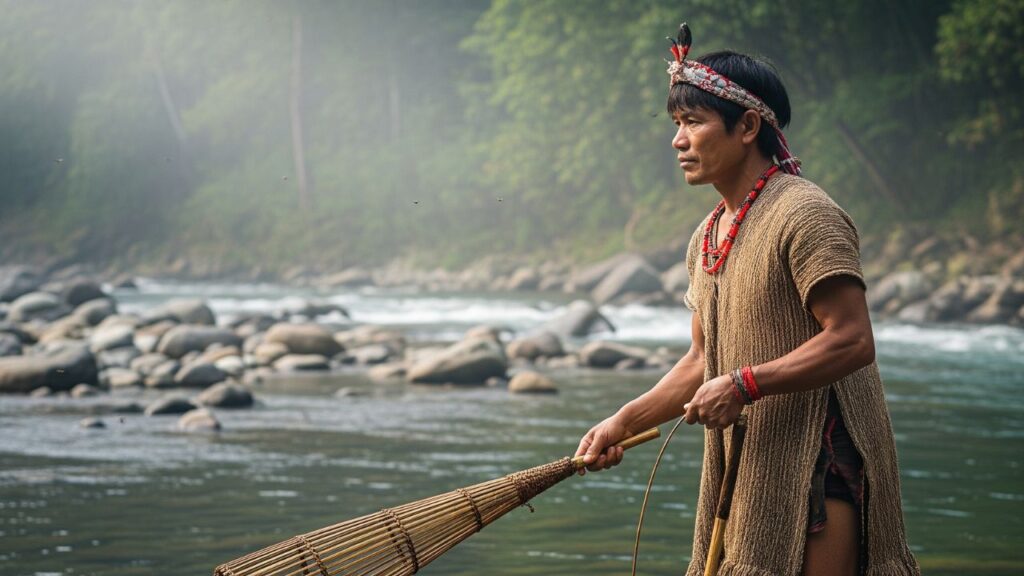
I once trekked with tribal hunters who moved like the wind. They carried blowpipes and rope traps—no guns, no noise. Just age-old knowledge passed down without writing.
These tools were deceptively simple. A stick, a knot, a twist of vine.
But their precision was unmatched—shaped by generations of trial, error, and trust.
In Arunachal, I watched the Adi tribe fish using barbed spears in rushing rivers. It wasn’t just a method—it was an art. A silent dance between hand, river, and prey.
It wasn’t primitive. It was earned.
Tribal Warfare Tools: Guarding, Not Conquering
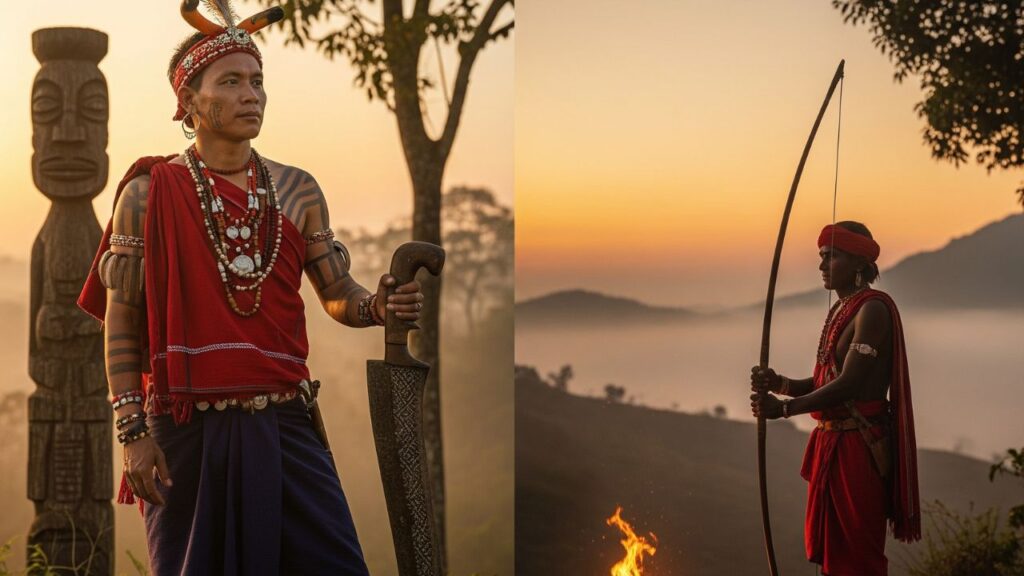
When conflict came—through rival tribes or colonial invaders—the tools of the tribe became weapons of resistance.
In Nagaland, I held a dao—a broad curved blade once used in both ceremony and battle. In Rajasthan, Bhil warriors passed down stories of bows taller than men.
What stood out was their purpose.
These were not tools of conquest. They were tools of protection.
They guarded forests, not kingdoms. They honored bloodlines, not empires.
That’s the soul of tribal warfare tools—they were built to defend, not to dominate.
When the Weapons Sleep
Today, many tribal weapons lie quietly. In Mizoram, I met a young Mizo man.
“We use air guns now,” he shrugged. “Faster.”
Then he paused. “But my grandfather’s axe is in the attic. We don’t touch it. It’s still his.”
Across the Northeast and beyond, tribal weapons now live in a strange space—between reverence and redundancy.
Some are sold as tourist souvenirs. Some are buried with their makers. But a few still wait—hung on walls, hidden in attics, carried in silence.
The Arambai: Precision in Silence
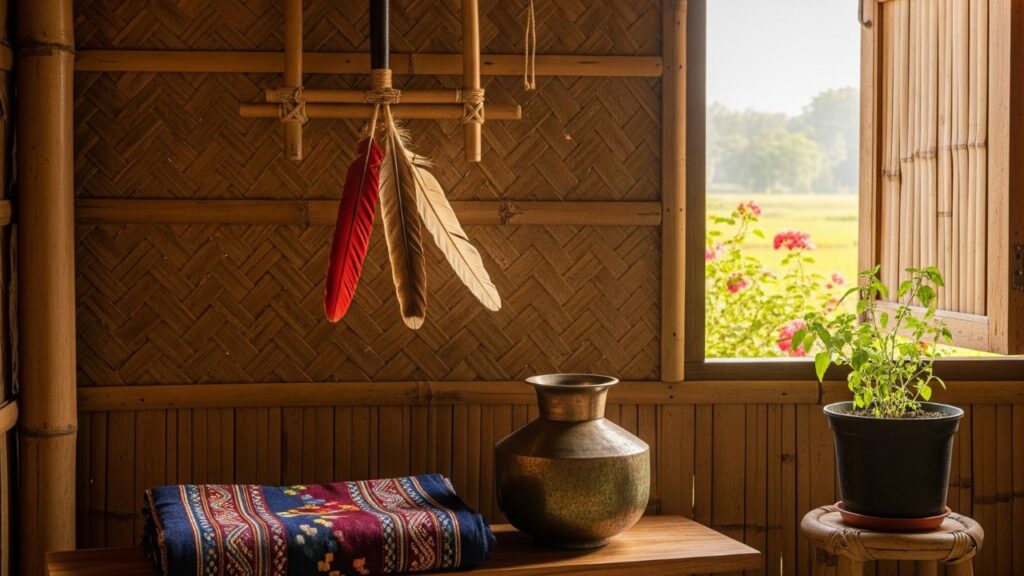
In Manipur, I learned about the Meitei community’s Arambai—a small feathered dart thrown from horseback. Silent. Deadly. Dipped in poison. A whisper of war.
It’s no longer used. But in many homes, it stands displayed.
Not as a threat, but as a symbol—of precision, protection, and ancestral pride.
Watch it come to life here:
Deadliest weapon | This simple weapon KILLED many ENEMIES | Manipur | Meitei
ShivaTells Travel Tips: Exploring Tribal Weapon Traditions
Where to Go:
- Chhattisgarh – Bastar, Kanker, Narayanpur
- Nagaland – Longwa, Khonoma villages
- Arunachal Pradesh – Ziro Valley, Pasighat, Along
- Odisha – Koraput, Rayagada
- Manipur – Bishnupur, Imphal Valley
Best Season to Visit:
October to March – Festival time and mild weather make it perfect for immersive experiences.
How to Travel Respectfully:
- Travel with local guides or NGOs
- Always ask permission before touching or photographing weapons
- Never attempt to buy authentic weapons—many are sacred and ceremonial
Watch More from the Trail:
- Weapons of Manipur’s Hill Tribes | ShivaTells
- Naga Gunsmiths: Handmade Guns in Nagaland | ShivaTells
Conclusion:
To truly hold one of these weapons is to hold a living story.
It carries the silence of the hunter, the skill of the blacksmith, and the patience of generations.
The traditional weapons of tribes are not gone.
They’re just resting—in walls, in memories, in the hands of those who still know their weight.
They were never about violence.
They were about knowing when not to use them.
That is their power.
That is their wisdom.
And that is why they must be remembered.
Read stories from Northeast India
- This Man from Assam lives and loves ORCHIDS!
- Strange Indian TRADITIONS | Rare Turtles are offered in this TEMPLE of ASSAM
